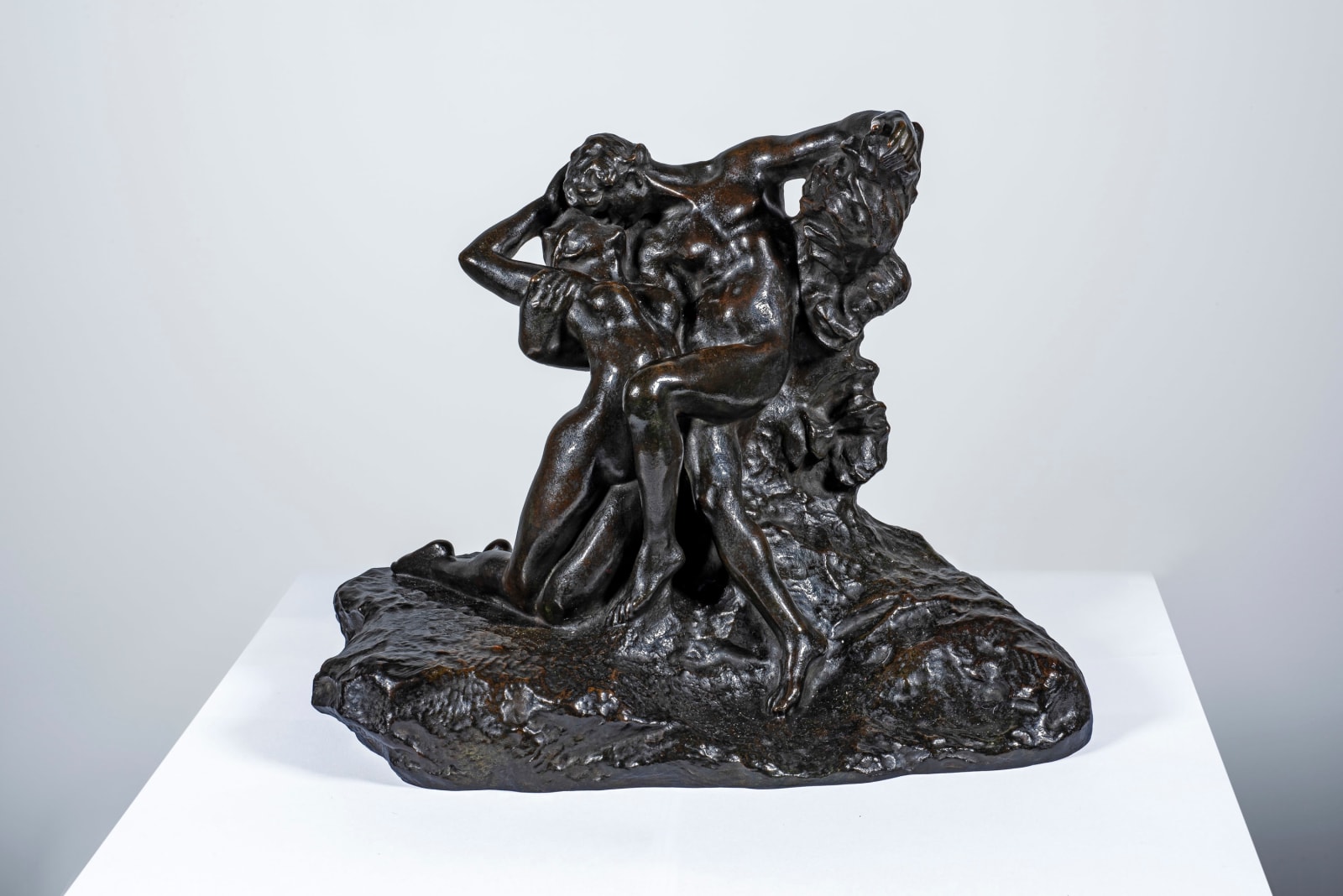-
Artworks
Auguste Rodin
L'éternel printemps, second état, 4ème réduction, dite aussi "no.2'", 1884Bronze
This reduction was conceived in 1898 and cast by the Alexis Rudier foundry in 19279 3/4 x 13 x 7 7/8 in, 24.7 x 33 x 20 cmInscribed 'Rodin', stamped with foundry mark and stamped with raised signature 'A. Rodin'Also known as Zéphyr et la terre or Cupidon et Psyché, L'Éternel printemps is one of Rodin’s best known sculptures. Similarly to Le Baiser (The Kiss) L'Éternel printemps was likely...Also known as Zéphyr et la terre or Cupidon et Psyché, L'Éternel printemps is one of Rodin’s best known sculptures. Similarly to Le Baiser (The Kiss) L'Éternel printemps was likely conceived for Rodin’s sculptural portal The Gates of Hell, commissioned by the French government in 1880. The monumental project was designed to be the centrepiece of a planned national museum of decorative arts in Paris that was never completed and portrayed the human passions and hideous tortures of Dante’s Inferno.
L'Éternel printemps displays a passionate embrace between Paolo and Francesca from Dante’s Divine Comedy. In this story Francesca is trapped in a loveless marriage to Gianciotto, the deformed son of the Lord of Rimini, and falls desperately in love with her husband’s younger brother Paolo. When the lovers are discovered sharing their first kiss they are violently murdered by Gianciotto and banished to the second circle of hell for their crime. Artists of the Paris Salon, such as Rodin, were often preoccupied with the theme of forbidden love, which held a particular fascination for a nineteenth century audience.
Rodin took the figure of Francesca from his earlier work Torso of Adele. For the sculpture Rodin used one of his favourite models Adèle Abbruzzesi who he also depicted in Illusions Received by the Earth. L'Éternel printemps was a highly successful work and was translated into marble and bronze in different sizes. The euphoria of the lovers and the stretched rhythmic movement of their intertwined bodies conveys Rodin’s ability to create iconic images that resonates throughout time.Provenance
Musée Rodin, Paris
Eugène Rudier, Le Vésinet (acquired from the above)
M Massot-Pellet, France (acquired in 1970)
Hôtel Drouot, Paris, April 1, 1975
Edgardo Acosta, Los Angeles (acquired at the above sale)
Georges Sakelaris, Portland (acquired from the above)
Steve Banks Fine Arts, San Francisco
Joe R. & Teresa L. Long, Austin (acquired from the above on January 16 1998)
Literature
Léon Maillard, Auguste Rodin, Statuaire, Paris, 1899, pp.121 and 122 (another cast illus.)
Georges Grappe, Catalogue du Musée Rodin, Paris, 1927, nos.69-70, p.42 (another cast illus.)
Judith Cladel, Rodin, London, 1936, p.97 (marble cast illus.)
Georges Grappe, Le Musée Rodin, Paris, 1944, no.87, pl.56 (another cast illus.)
Robert Descharnes and Jean-François Chabrun, Auguste Rodin, London & Melbourne, 1967, p.134 (another cast illus.)Ionel Jianou and Cécile Goldscheider, Rodin, Paris, 1967, nos.56-57, pls.56-57 (other casts illus.)
Antoinette Le Normand-Romain, The Bronzes of Rodin, Catalogue of Works in the Musée Rodin, vol. I, Paris, 2007, no.S.777, p.334 (another cast illus.)
John L. Tancock, The Sculpture of Auguste Rodin, Philadelphia, 1976, no.32b, p.246 (another cast illus.)
Rodin, Fondation Pierre Gianadda, Martigny, 1984, no.63, p.111 (another cast illus.)
This work will be included in the forthcoming Catalogue Critique de l'oeuvre sculpté d'Auguste Rodin currently being prepared by the Comité Rodin in collaboration with Galerie Brame & Lorenceau under the direction of Jérôme Le Blay under the archive number 2019-5939B.3of 3
